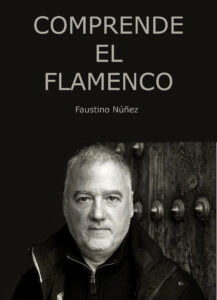II Edición Flamenco en Red – comprende el flamenco
CURSO PROGRESIVO “COMPRENDE EL FLAMENCO”
Impartido por Faustino Núñez

- Comprende el flamenco
El género flamenco es la expresión musical propia de Andalucía. En esta introducción al flamenco responderemos a diferentes cuestiones en torno al flamenco. Qué es el flamenco, dónde surgió, cuándo, por qué, quién lo creó, como se hizo.
Accede al vídeo aquí
- Estilos del flamenco
El género flamenco lo forman una gran variedad de estilos que forman un sistema musical que los agrupa en diferentes complejos genéricos. El complejo de la soleá, la seguirilla, los tangos y los fandangos. Un quinto grupo lo integran los estilos derivados directamente del folclore.
Accede al vídeo aquí
- Flamenco, cante, toque y baile.
Formas de emisión vocal en el cante flamenco, las escuelas de guitarra flamenca y el baile. Tres maneras de expresar el flamenco ilustradas en este capítulo con audiciones y videos. Un recorrido por las figuras más representativas del género.
Accede al vídeo aquí
- El compás
Uno de los principales obstáculos que encontramos para comprender el flamenco es el compás. En este video repasamos las diferentes especies de compás que utilizan los flamencos para medir su música. Estilos en compases binarios, ternarios y de amalgama.
Accede al vídeo aquí
- El compás II
Accede al vídeo aquí
- Tonalidades de la guitarra
Accede al vídeo aquí
- Los tonos del toque flamenco
Acceder al vídeo aquí
- Las soleares, cantiñas y seguirillas
Accede al vídeo aquí
- Los tangos
Accede al vídeo aquí

